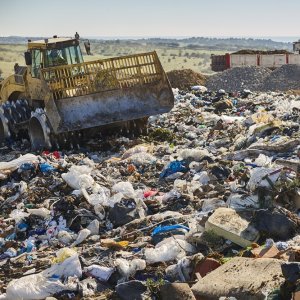Mexico’s Gas Shortage: Real or Government Miscalculation?

STORY INLINE POST
Recently, many people have commented on social networks about a problem related to the consumption of gasoline and diesel in Mexico that, when added to the bullish pricing dynamics for these products, is becoming worrisome.
This problem is the shortage of gasoline and diesel at service stations in some areas of the northeast, west and in Mexico City.
But why are #Gasolina and diesel scarce in these regions of the country?
There are three main reasons, which need clarification as they are not absolute. There are also a number of determining factors according to geographical area and consumption patterns, among others. The three preponderant variables are:
1. Bullish prices
2. Fiscal incentives with little planning
3. Hostile regulation by the authorities
Let’s explain each of them. The first is the constant volatility of fuel prices internationally, remembering that the price structure in Mexico comes under the rules of the free market and fiscal policies of the government. In this sense, the financial organization JP Morgan, in an analysis published on its website on May 13, 2022, said that the Russian-Ukrainian conflict is pressuring prices and availability of oil and gas worldwide, which definitively impacts the final links of the value chain: consumers.
This translates into difficulties in the supply of fuel to the main world economies, in addition to the global inflationary environment as a result of the effects of the COVID-19 pandemic, including the unprecedented increase in consumer demand.
Since January 2022 (even a little earlier), the Mexican government has undertaken a series of tax incentives related to the Special Tax on Products and Services (IEPS), the main tax applied to fuel in Mexico. This incentive reduces the average tax rate of MX$5.80 (US$0.30) per liter of fuel, such that there has been a zero-tax rate over the four months since its start.
However, in February 2022, in the face of global and local inflationary pressures, the Mexican government chose to apply an additional tax incentive on the Value Added Tax (VAT), as well as the Income Tax (ISR) paid by fuel market participants and regulated by the Ministry of Energy (SENER) and the Energy Regulatory Commission (CRE), taking the discounts up to a range of another MX$5.00 per liter of fuel.
The additional incentive, by itself, is not the problem. The issue lies with the mechanism of payment and return of the same by the obligated subjects for this purpose, which in this specific case, are the companies with fuel import permits from SENER, as well as the distribution companies that sell first-hand and with permits from CRE, within which are not only the well-known private companies but also PEMEX.
This mechanism implemented by the Ministry of Finance and Public Credit (SHCP) establishes that these contributions must be paid by those who provide fuel (it should be remembered that PEMEX is preponderant, with 70 percent of the supply of gasoline and diesel in Mexico) within the stage of the value chain, known as First Hand Sale. Later, the companies paying the tax can request a refund from SHCP in relation to the additional incentives applied.
This situation causes a financial vacuum that the importing companies dedicated to the First Hand Sale need to cover, while SHCP provides the returns, which tend to take approximately three months or more. Citing the example of delivering gasoline by rail, this implies a financial gap of return and financing for the Mexican state of the incentive on the order of US$5 to US$6 million. Considering that, on average, a public or private company carries out two to three similar operations a week, this translates into returns of up to US$72 million dollars a month or MX1.4 billion.
Combining the previous scenario with the first factor, it forces companies, both public (PEMEX) and private, to adjust their mechanisms for the purchase and delivery of fuel around returns or additional financing mechanisms, generating a distortion between the supply of products with the demand on the part of consumers and motorists.
This imbalance means that areas of the country that have a natural logistical weakness due to their geographical location in relation to fuel storage points are affected at first by shortages of gasoline and diesel. These areas can be found in the northeast, west of the country and in Mexico City, the latter mainly due to its high demand.
This leads to the third factor that we are seeing appear on the scene: hostile regulation. What do we mean by this?
It is understandable that both CRE and SENER direct their actions under the provisions of the country's hydrocarbon laws, but they also do so based on the Public Policies on Energy issued by the president of the republic, noting that these public policies change with each federal administration. In the current case, the federal government has adopted a policy of criminalization of energy activities carried out by private companies, which is incompatible with the legal and regulatory structure in force.
Therefore, we observe that the government agencies responsible for regulating the import, transport, storage and sale of gasoline and diesel have an aggressive or extremely strict attitude toward private participants, but not toward PEMEX, a state company, that has not only the financial support of the Budget of Expenditures of the Federation but also of the regulatory advantage provided by SENER and CRE. Despite all these efforts, demand continues to grow and the financial-economic challenges, both endogenous and exogenous, are on a worrying increase, placing PEMEX in a situation where it is already impossible to cover demand. As an example, Tabasco, Chiapas and Campeche, in the Mexican southeast, paradoxically, are the regions that feel the direct influence of the Olmec refinery that is under construction.
Likewise, hostile regulation has led to rail product connection facilities, as well as storage, being suspended even on the mere assumptions of acting officials, putting at risk the supply capacity demanded by consumers and, therefore, increasing the risks of coverage for PEMEX when the number of delivery points are increased, due to its manifest inability to carry it out. The suspension of storage and port facilities by the regulatory authorities, represents a contravention of the objectives of the Public Policy on Fuel Storage, recently modified by this federal administration.
Is there a solution?
Yes, but it is not short term.
Much of this problem results from the incompatibility between SENER's Public Energy Policy and the regulatory and market model under which the legislation and the operation of CRE are designed. However, there are solutions that can be applied, with a little will on the part of the Mexican authorities. In a first scenario:
1. Increase the number of participants in the fuel market: more import, storage, transport and sales permits, diversifying the offer and encouraging consumer compensation between brands.
2. Decrease the aggressiveness of incentives, and refocus them on the transport of goods, public transport and commercial, industrial, agricultural or livestock activities, allowing the lowest deciles of the population to be direct beneficiaries of the incentives, coupled with the federal government not losing income.
3. Improvement of the return times of contributions paid through extraordinary incentives to the importer or distributor of first-hand sales, so that they do not lose liquidity and the product can "flow" better to the final consumer, without rationing.
These measures must be analyzed thoroughly and systematically according to the areas of consumption, but, in general terms, they will allow tangible results in about eight to 10 months.








 By Santiago Arroyo | Energy Regulation Specialist and CEO -
Wed, 06/15/2022 - 11:00
By Santiago Arroyo | Energy Regulation Specialist and CEO -
Wed, 06/15/2022 - 11:00
















